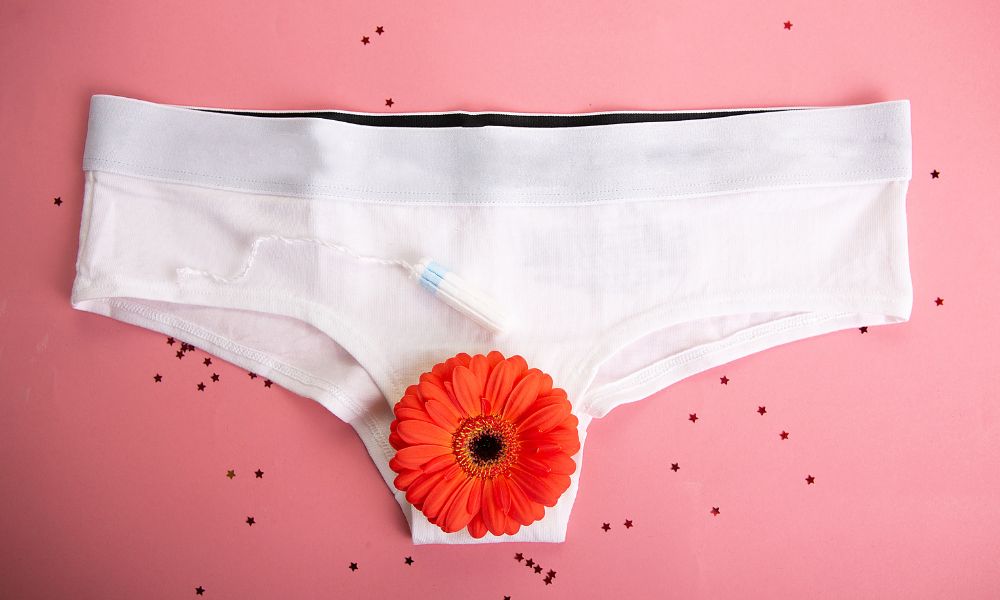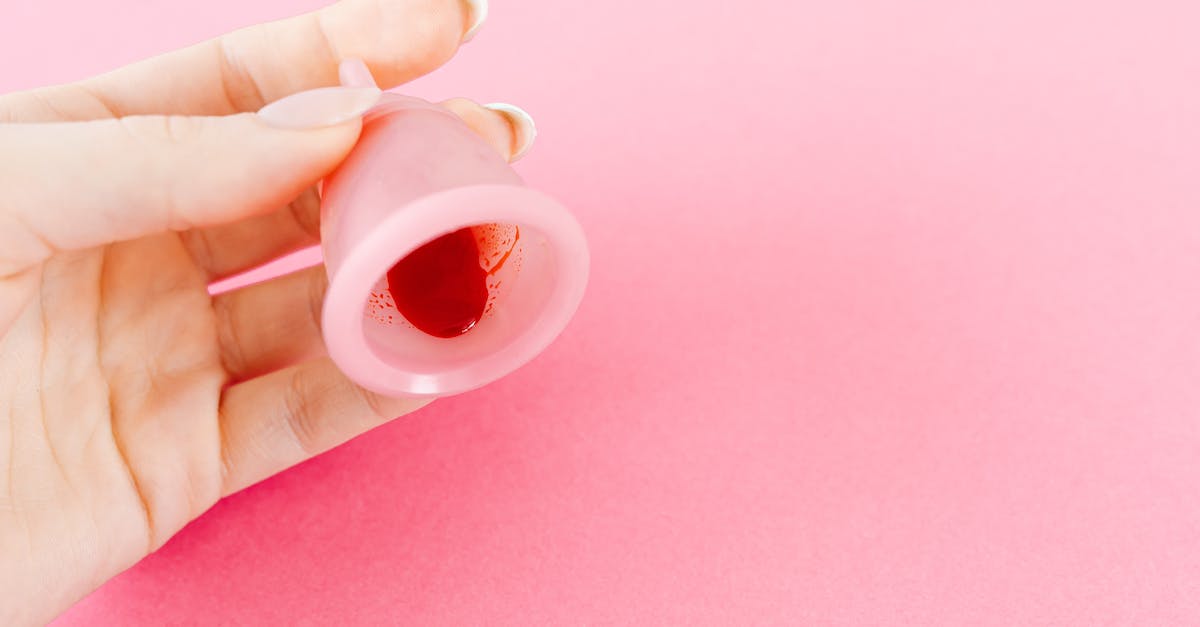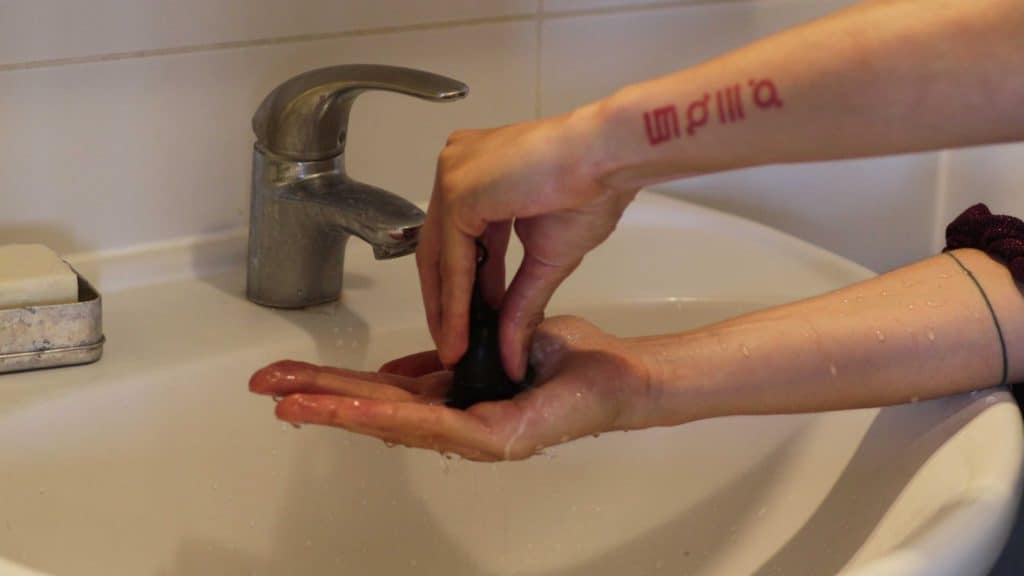Are you tired of dealing with the discomfort of yeast infections? As someone who understands the frustration and agony they can bring, I know how important it is to find products that won’t exacerbate the issue. If you’re a menstrual cup user, you may be wondering if your cup could be the culprit behind your yeast infections. Well, I’m here to put your mind at ease. Contrary to popular belief, menstrual cups do not cause yeast infections. In fact, studies have shown that cup users actually have lower rates of vaginal infections compared to users of other menstrual products. So, let’s get into the facts and debunk the myths surrounding this topic.
Contents
- 1 Can Your Menstrual Cup Cause Yeast Infections?
- 2 Potential Link Between Menstrual Cups and Yeast Infections
- 3 Tips for Preventing Yeast Infections While Using a Menstrual Cup
- 4 Conclusion
- 5 Frequently Asked Questions
- 5.1 Can using a menstrual cup cause yeast infections?
- 5.2 What are the possible reasons for the lower infection rates among menstrual cup users?
- 5.3 How can I minimize the risk of developing a yeast infection while using a menstrual cup?
- 5.4 How do I clean and sterilize my menstrual cup?
- 5.5 What are the disadvantages of using a menstrual cup?
- 5.6 Can using a menstrual cup help prevent yeast infections?
Can Your Menstrual Cup Cause Yeast Infections?

Contrary to popular belief, using a menstrual cup does not cause yeast infections. In fact, studies have shown that cup users actually have lower rates of vaginal infections compared to users of other menstrual products. Menstrual cup users in Kenya were found to have lower rates of bacterial vaginosis (BV) and yeast infections (candidiasis) when compared to users of menstrual pads, cloth, tissues, or other scavenged materials.
While using a menstrual cup does not cause yeast infections, it is important to take proper hygiene measures to minimize the risk of infection. Washing your hands before handling the menstrual cup and ensuring that you sanitize the cup before and after use can help decrease the possibility of an infection. Additionally, it may be beneficial to change your sanitary product more frequently when you have a yeast infection during your menstrual period.
If you already have a yeast infection before or during your menstrual cycle, it is advisable not to use your menstrual cup as it may cause additional irritation to your already sensitive vagina. If you notice a yeast infection while using your menstrual cup, it is best to remove the cup until the infection has cleared. Boiling your cup in water will help ensure that it is disinfected before your next cycle.
It’s important to note that menstrual blood can contain yeast, which can potentially cause an infection if not properly managed. However, with proper hygiene practices and regular cleaning of your menstrual cup, the risk of developing a yeast infection is minimal.
Using a menstrual cup does not cause yeast infections. In fact, cup users have lower rates of vaginal infections compared to users of other menstrual products. By practicing good hygiene and taking appropriate measures to maintain cleanliness, you can safely use a menstrual cup without the worry of developing a yeast infection.
Potential Link Between Menstrual Cups and Yeast Infections

Studies Exploring the Connection
Several studies have been conducted to investigate the potential link between using a menstrual cup and developing yeast infections. These studies have provided valuable insights into the topic:
- Kenyan Study: A study conducted in Kenya compared the rates of bacterial vaginosis (BV) and yeast infections among menstrual cup users and users of other menstrual products such as pads, cloth, tissues, or scavenged materials. The findings revealed that menstrual cup users had lower rates of both BV and yeast infections than users of other products. This suggests that using a menstrual cup does not increase the risk of yeast infections.
- French Study: Another study conducted in France examined the vaginal flora of women using menstrual cups. The results showed that there were no significant differences in the presence of Candida, the fungus responsible for yeast infections, between menstrual cup users and non-users. This further supports the notion that using a menstrual cup is not associated with an increased risk of yeast infections.
Possible Reasons for the Link
While the studies mentioned above suggest that using a menstrual cup does not cause yeast infections, it is important to consider possible reasons for the observed link between menstrual cup use and lower infection rates:
- Breathability: Menstrual cups are typically made of medical-grade silicone or rubber, which allows for better airflow compared to other menstrual products. This increased breathability may help prevent the growth of yeast, reducing the likelihood of developing an infection.
- No Chemicals: Unlike some disposable menstrual products that may contain chemicals or additives, menstrual cups are made from non-toxic materials. This absence of chemicals may contribute to a healthier vaginal environment and lower risk of yeast infections.
- Proper Hygiene: Menstrual cups require regular cleaning and sanitizing, which promotes good hygiene practices. Washing hands before handling the cup and sterilizing it before and after use can help minimize the risk of infection. Additionally, changing the cup more frequently during a yeast infection can be beneficial.
- No Irritation: Menstrual cups are designed to be worn internally, reducing the chances of external irritation that can lead to yeast infections. However, if a yeast infection is already present, it is advisable not to use the cup as it may cause additional irritation.
While there have been studies exploring the potential link between menstrual cups and yeast infections, the evidence suggests that using a menstrual cup does not cause yeast infections. Factors such as breathability, absence of chemicals, proper hygiene practices, and reduced irritation may contribute to the lower rates of yeast infections among menstrual cup users. With proper hygiene practices and regular cleaning, the risk of developing a yeast infection while using a menstrual cup is minimal.
Tips for Preventing Yeast Infections While Using a Menstrual Cup

Proper Cleaning and Sterilization
To minimize the risk of developing a yeast infection while using a menstrual cup, it’s crucial to prioritize proper cleaning and sterilization. Here are some tips to help you maintain a healthy cup:
- Wash your hands before handling your cup to avoid introducing any bacteria or yeast into your vaginal area.
- Empty and rinse your cup at least every 8-12 hours, or as recommended by the cup’s manufacturer. Use warm water and a mild, fragrance-free soap specifically designed for intimate use. Avoid using harsh chemicals or scented products, as they can disrupt the natural balance of your vagina.
- Sterilize your cup before and after your menstrual cycle. You can do this by boiling it in water for a few minutes or using a sterilizing solution recommended by the cup’s manufacturer.
- Avoid using harsh cleaning agents such as rubbing alcohol or hydrogen peroxide, as they can damage the cup and increase the risk of irritation or infection.
Choosing the Right Menstrual Cup Material
The material of your menstrual cup can play a significant role in preventing yeast infections. Consider the following options:
- Medical-grade silicone cups are a popular choice as they are hypoallergenic, non-porous, and easy to clean. Silicone cups are less likely to harbor bacteria or yeast, making them a suitable option for those prone to infections.
- Latex cups are an alternative, but it’s important to note that some individuals may have latex allergies or sensitivities. If you’re unsure, it’s best to consult with your healthcare provider before using a latex cup.
- TPE (thermoplastic elastomer) cups are another option, but they may not be as widely available as silicone or latex cups. TPE cups are generally considered safe, but it’s essential to follow the manufacturer’s guidelines for cleaning and maintenance.
Maintaining Good Hygiene Practices
In addition to proper cleaning and cup material, maintaining good hygiene practices can help reduce the risk of yeast infections. Here are some tips to consider:
- Change your cup regularly to prevent the buildup of bacteria or yeast. Aim to empty and rinse your cup every 8-12 hours, or as recommended by the cup’s manufacturer.
- Avoid using harsh soaps or douches in your vaginal area, as they can disrupt the natural pH balance and increase the risk of infections.
- Wear breathable underwear made from cotton or other natural materials. Avoid tight-fitting or synthetic underwear, as they can trap moisture and create an environment conducive to yeast growth.
- Avoid using scented menstrual products, such as pads or panty liners, as they can irritate the delicate vaginal tissues and disrupt the natural balance of your vagina.
- Practice good menstrual hygiene by washing your external genital area with mild soap and water regularly. Remember to pat dry gently to avoid any irritation.
By following these tips for proper cleaning, choosing the right cup material, and maintaining good hygiene practices, you can minimize the risk of developing a yeast infection while using a menstrual cup. Remember, every individual is unique, so it’s essential to listen to your body and consult with a healthcare provider if you have any concerns or persistent symptoms.
Conclusion
Using a menstrual cup does not cause yeast infections, contrary to popular belief. In fact, studies have shown that cup users actually have lower rates of vaginal infections compared to users of other menstrual products. Research conducted in Kenya and France has provided valuable insights into the potential link between using a menstrual cup and developing yeast infections. These studies found that menstrual cup users had lower rates of both bacterial vaginosis (BV) and yeast infections, with no significant differences in the presence of Candida, the fungus responsible for yeast infections, between cup users and non-users.
Possible reasons for the lower infection rates among menstrual cup users include the breathability of the cup, the absence of chemicals, proper hygiene practices required for cup use, and reduced external irritation. With proper hygiene practices and regular cleaning, the risk of developing a yeast infection while using a menstrual cup is minimal. To minimize this risk, it’s crucial to prioritize proper cleaning and sterilization. Additionally, choosing the right menstrual cup material and maintaining good hygiene practices are important factors to consider. By following these guidelines, you can confidently use a menstrual cup without worrying about yeast infections.
Frequently Asked Questions
Can using a menstrual cup cause yeast infections?
Contrary to popular belief, using a menstrual cup does not cause yeast infections. In fact, studies have shown that cup users actually have lower rates of vaginal infections compared to users of other menstrual products. Menstrual cup users in Kenya were found to have lower rates of bacterial vaginosis (BV) and yeast infections (candidiasis) when compared to users of menstrual pads, cloth, tissues, or other scavenged materials.
What are the possible reasons for the lower infection rates among menstrual cup users?
Possible reasons for the lower infection rates among menstrual cup users include the breathability of the cup, the absence of chemicals in the cup, proper hygiene practices required for cup use, and reduced external irritation.
How can I minimize the risk of developing a yeast infection while using a menstrual cup?
To minimize the risk of developing a yeast infection while using a menstrual cup, it’s crucial to prioritize proper cleaning and sterilization. It is also important to choose the right menstrual cup material and maintain good hygiene practices.
How do I clean and sterilize my menstrual cup?
To clean and sterilize your menstrual cup, rinse it thoroughly after each use. To sanitize the cup after your period is over, boil it for a few minutes. After the cup is boiled, set it aside to completely cool down and dry off.
What are the disadvantages of using a menstrual cup?
A menstrual cup may irritate your vagina if the cup isn’t cleaned and cared for properly. It may also cause discomfort if you insert the cup without any lubrication. There can be an increased chance for infection if the cup is not cleaned and sterilized correctly.
Can using a menstrual cup help prevent yeast infections?
When used properly (and cleaned correctly), menstrual cups should be able to help you avoid the buildup of yeast and bacteria as well as allow your vaginal pH to remain balanced. Sterilizing and cleaning your cup between uses are both impactful parts of this preventive measure.
I am a medical student with experience and interest in Women’s health and well-being.